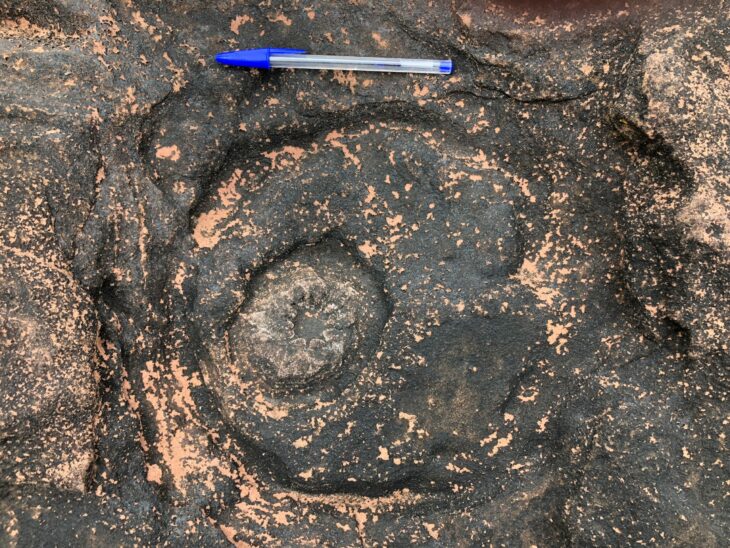Lightning bolts can be deadly or destructive, but some researchers propose they might also have supplied essential elements for the first life on Earth. In particular, all life uses the element phosphorus. It’s found in everything from our genetic material to our cell membranes, but most of the phosphorus on Earth is locked up in solid minerals in the form of phosphate. Each phosphorus atom in a phosphate mineral is tightly bound by 4 oxygen atoms, making it extremely difficult for life to extract.
Today, phosphorus is released when phosphate minerals are broken down by interacting with water and gases in a process called weathering. Weathering is accelerated by plant roots that break rocks into soil and by microbes that secrete acids and dissolve minerals. Man-made fertilizers are also a major source of phosphorus due to widespread agricultural use.
In other words, the modern biosphere works together to release tightly bound phosphorus atoms from their phosphate cages to share with all forms of life on Earth. But what about the first cells struggling to eke out a living billions of years ago – they hadn’t developed ways to deconstruct phosphate minerals, so where did they get their phosphorus? Scientists call this conundrum the phosphate problem.
To solve the phosphate problem, scientists propose early life must have used more accessible forms of phosphorus, termed reactive phosphorus. Unlike phosphate, minerals containing reactive phosphorus are incredibly rare on Earth. Most examples have been found in meteorites, so some researchers suggest the original cells got their phosphorus from frequent meteorite impacts. However, this source would have required the reactive phosphorus in the meteorites and any nearby proto-life to survive the impacts.
Scientists have also found reactive phosphorus in rocks formed from lightning strikes, called fulgurites. This discovery prompted a team led by researchers from Germany to test whether lightning could have supplied the majority of phosphorus to early life. To do so, they attempted to synthesize phosphorus-bearing fulgurites from lightning in the lab. Their approach improved on previous studies because they used natural phosphate minerals rather than silica sand, and they applied a continuing electrical current rather than a single spark, which they argued better simulated how natural lightning forms fulgurites.

A 250 million-year-old fossilized lightning strike, on the Isle of Arran. Photo by the author.
The scientists put about half a pound (250 grams) of crushed phosphate minerals inside an insulated sample tube. They explained natural lightning consists of a short burst of high magnitude current followed by a longer-duration continuing current of a lower magnitude. To simulate this in the lab, the team first zapped the sample with an intense electrical pulse for around 100 microseconds, or 1/10,000th of a second, using a high-voltage generator called a Marx generator. They immediately followed this with a lower-voltage electrical current for half a second using a standard DC power source.
Their experiment produced a brown crystalline solid about the size of a dime with a hollow pit in its center. The team explained a pit like this is common in natural fulgurites. Around the central crater they also saw needle-like crystals of newly-formed minerals extending away from the pit in the direction of lightning strike. They interpreted these structures to indicate the lightning had fully melted and fused the rock powder to form a fulgurite.
The scientists characterized the fulgurite with a variety of chemical methods using X-rays, lasers, and electron beams. They found it was made up almost entirely of phosphate, but with no signs of reactive phosphorus in it. They suggested this was because any reactive phosphorus phases formed were too small to identify with these analyses.
For a closer look, they used a method that can image magnetic fields around the nuclei of atoms. With this method the team found magnetic patterns suggestive of reactive phosphorus phases in the fulgurite. They estimated up to 5% of the sample was reactive phosphorus, higher than estimates of 0.2 to 3% from other lab-produced fulgurites.
The scientists showed lightning can produce small amounts of reactive phosphorus from crushed phosphate minerals in the lab. But does this mean fulgurites were a likely food source for early life? The authors stressed the total supply of reactive phosphorus on early Earth would have depended on unknown phenomena like the rate of lightning discharge and the type of rocks it struck. They suggested future experiments should test how the composition and grain size of the target materials affect the supply of reactive phosphorus.


